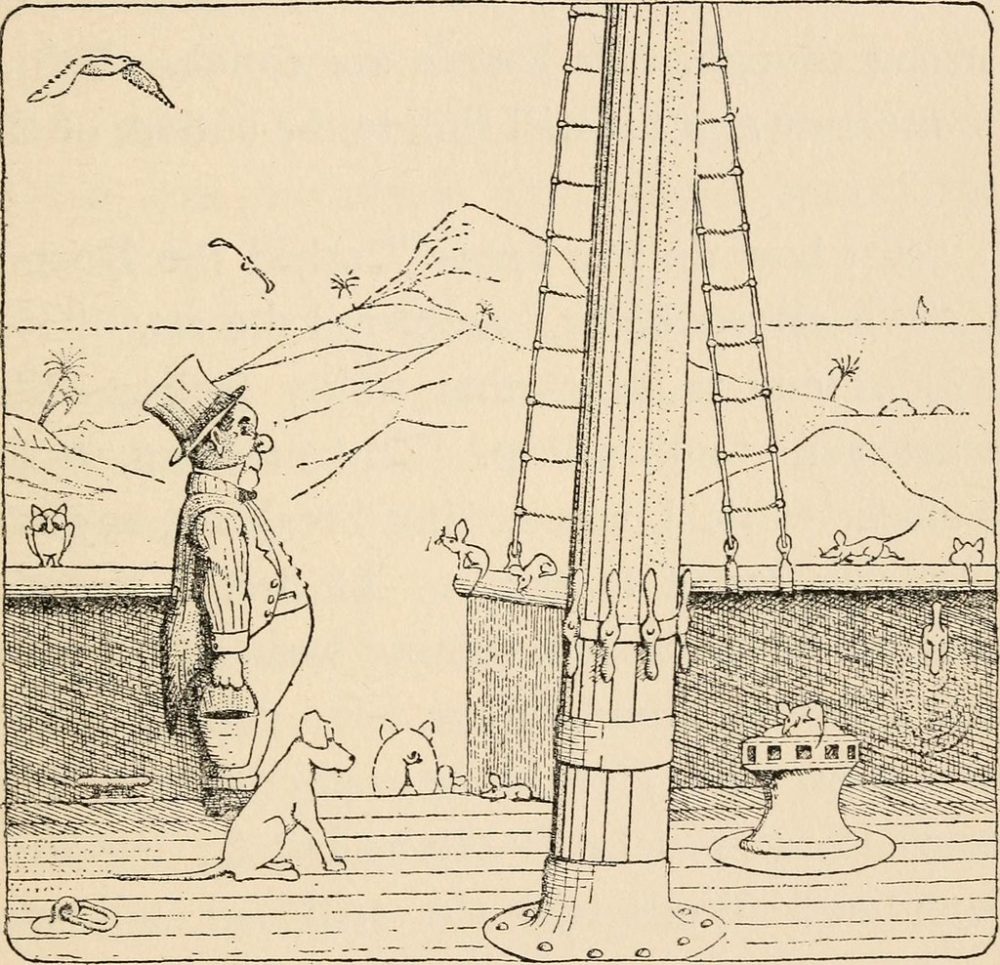How does the film stack up to the novel?

‘The Story of Dr. Dolittle’ did not age well.
Few works of fiction have implemented the story of man’s friendship with animals like Hugh Lofting’s “Dr. Dolittle” stories have, and this year’s film adaption “Dolittle” directed by Stephen Gaghan replicates. Both are quite outlandish in narrative storytelling and have their unusual charms.
The book
“The Story of Dr. Dolittle” is a 1920 book by Hugh Lofting, written for children and sprinkled with subtle tongue-in-cheek social commentary.
Having read this book as a child, I found it to be quite silly and enjoyable. When I reread it to prepare for this article, I could not help but notice the glaring parodies and commentary Lofting weaved into this story of a man fed up with the norms of living and seeks refuge in his own world with the animals he loves.
Having failed at being a people doctor, he turns to be a veterinarian learning how to understand animals from his pet parrot, Polynesia. In so doing, he sheds his human family and chooses the animals as his new family.
An example of this would be John Dolittle choosing to have an alligator live in his house over his housekeeping sister who leaves after he refuses to send it away at her behest.
He travels to Africa to help the ape colony there, which is being wiped out by a plague. Upon journeying to Africa he is hampered by an angry king, cherished by the ape colony he saves and is gifted with the odd animal called the “Pushme-Pullyou.”
This animal is essentially two goats connected at the waist. Seeing that creature converted into film is something I would like to see.
The next story, “The Voyages of Dr. Dolittle” is what the film is more primarily based upon. Over five times thicker than its predecessor, it follows Dolittle and a young apprentice in several non-connected stories as they try to prove a man’s innocence with the help of a dog. The pair eventually set out to sea on further adventures.
Unlike its predecessor, there is no great risk or plot driving the story. Neither of these stories have aged well. An example would be the parrot using insensitive language to refer to people of color.
The film
Originally titled “The Voyage of Dr. Dolittle” before being trimmed down to “Dolittle,” this story follows elements of the books before telling its own story. It is a far more explained and developmental story regarding its title character. In an animated prologue, it tells a different story of John Dolittle’s origin and disposition.
Having lost his beloved wife at sea, John Dolittle becomes a social recluse and retreats into his own world surrounding himself with his animals for company. When the queen’s life is put in danger in a fiendish conspiracy, Dolittle, his animals and young self-appointed apprentice set out on a voyage to find a cure for her majesty.
This film is notable for being actor Robert Downey Jr.’s first non-Iron Man role in over half a decade.
The story is quite humorous and more engaging with a hurt but healing Dolittle. In his journeys, he soon discovers his blooming newfound love for people. The parrot Polynesia voiced by Emma Thompson says in the beginning, “You can’t ignore people just because they’re…people.”
Dolittle realizes how human he truly is while remaining connected to his animal family. This theme alone is the biggest departure from Lofting’s vision of an eccentric man who leaves his human connections behind to be with animals.
Critics have been recently raking this film across the coals mainly for its crude humor and I can see where their concerns lie. The climax of the film involves Dolittle helping a creature who is suffering from something it ate, resulting in “potty humor” at its best or worst.
However, the book’s climax involved Dolittle white-washing an African prince’s face with his medicine, so I will let you decide which climax is worse.
The victor
I prefer the film as it tells a more engaging story in its narrative and delightful character. Plus, it’s far less awkward to discuss compared to its source material.
